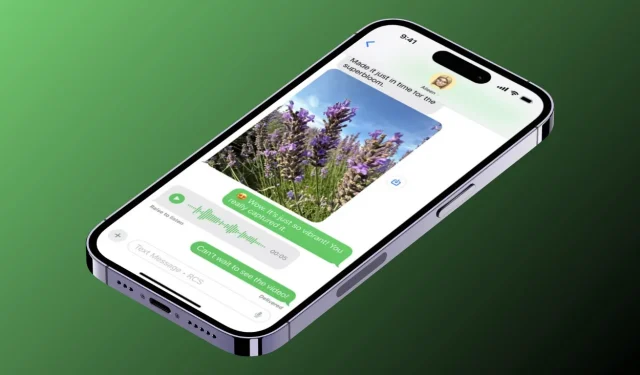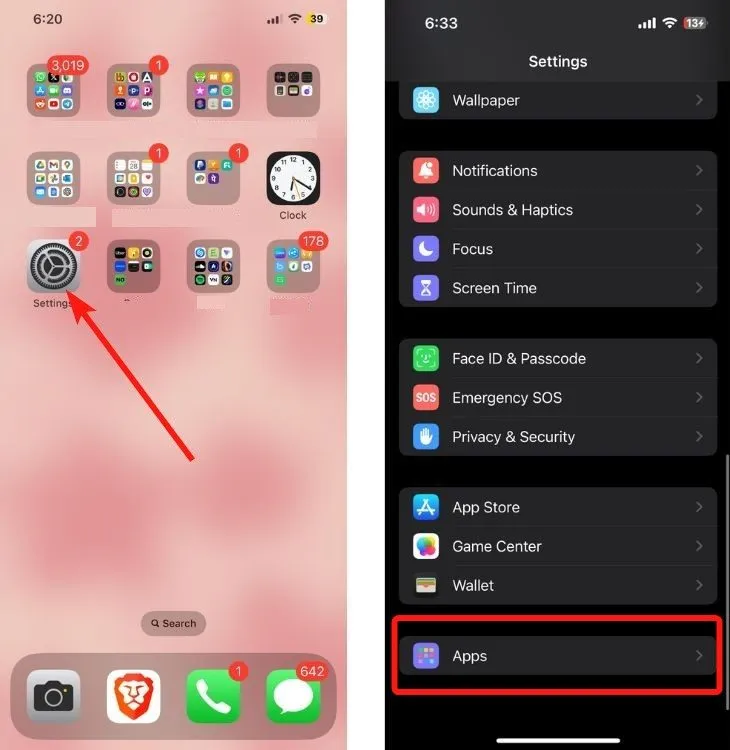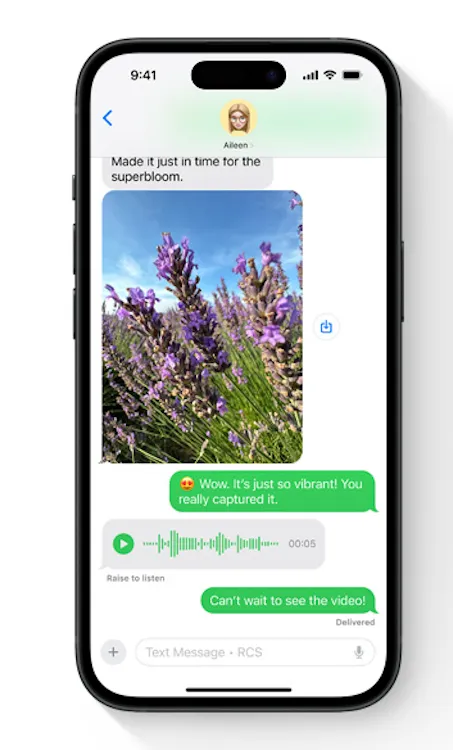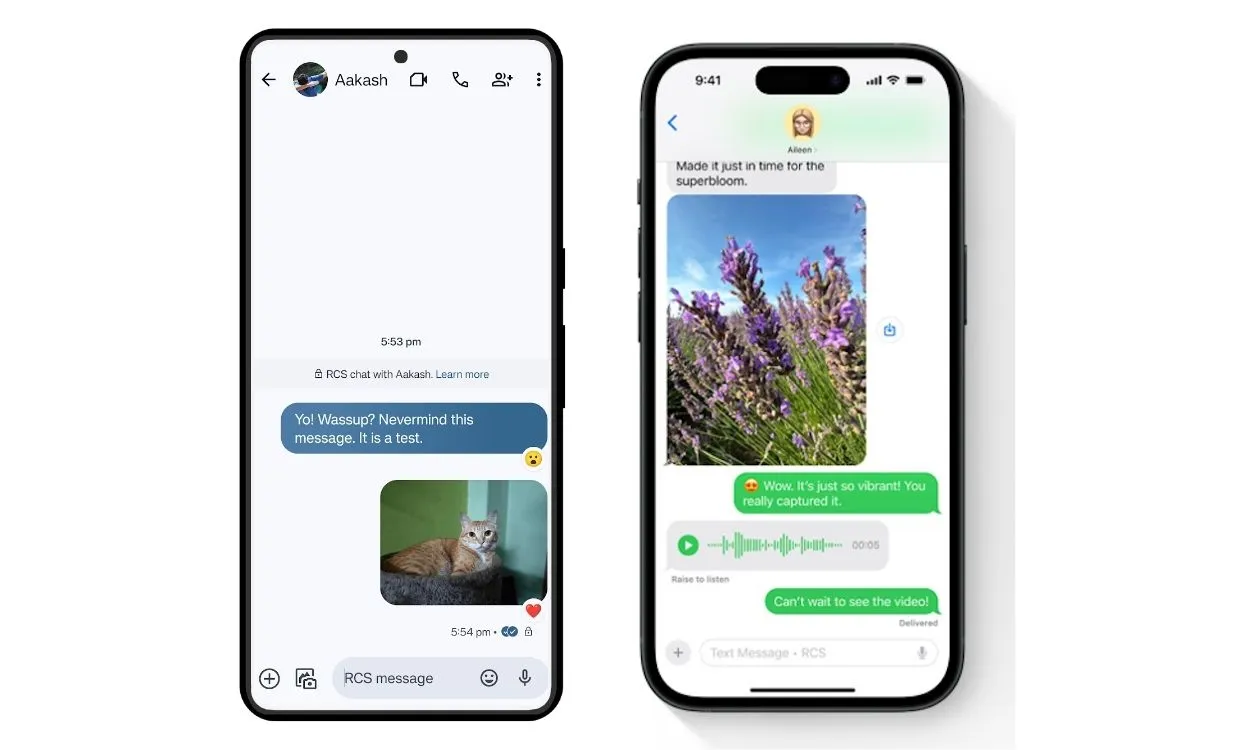
Apple unveiled RCS during WWDC24 along with Apple Intelligence and ChatGPT integration, marking a significant advancement for consumers worldwide. The rollout of RCS in iOS 18 is now underway, allowing users in the US, Canada, and select European regions to exchange rich text messages seamlessly with their Android contacts.
What is RCS?
RCS, or Rich Communication Services, is an advanced messaging standard first implemented by Google in Google Messages and later embraced by Samsung. It moves away from traditional cellular formats such as SMS and MMS, relying instead on Wi-Fi and mobile data. This transition enables features like read receipts and the capacity to send and receive high-quality media, enriching communication between different devices, irrespective of their operating systems.
RCS Supported Carriers
Currently, RCS is available on iPhones in the US, Canada, and various European countries. According to Apple, RCS messaging can be accessed in the US through these carriers:
- AT&T
- C Spire
- Consumer Cellular
- Cricket
- FirstNet
- Metro by T-Mobile
- PureTalk
- Red Pocket
- Spectrum
- T-Mobile USA
- TracFone / Straight Talk
- US Cellular
- Verizon Wireless
- Visible
- Xfinity Mobile
You can visit this Apple Support page to check if your wireless carrier supports RCS messaging in your area.
How to Enable RCS on iOS 18
If your iPhone is operating on iOS 18 but RCS isn’t visible, be aware that its availability may come gradually. Since it’s an opt-in feature, follow these steps to enable RCS in the Settings app:
- Open the Settings app on your iPhone.
- Select Apps > Messages.

- Scroll down on this screen and enable the RCS Messaging toggle under “Text Messaging.”
- Open the Messages app and attempt to send RCS messages to a contact or react to existing messages.
- If RCS fails to function, toggle it off and then on again, restart your iPhone, or enable and disable Airplane Mode.

How Does RCS Work on iOS 18?
RCS operates on iOS in a manner similar to Android, featuring enhanced texting capabilities such as message reactions, read receipts, and high-quality media sharing, effectively bridging the gap between iOS and Android.

While Apple hasn’t disclosed the specific RCS version for iPhones, it has been suggested that it aligns with the Universal Profile 2.4, which introduced rich business messaging (RBM) in 2019.
It remains unclear whether Apple will incorporate RBM in the stable iOS 18 version, as it already provides a similar service via Apple Business Chat in iMessage. Thus, it is advisable to approach claims of RBM’s iOS inclusion with caution.
RCS on iPhone vs RCS on Android
Although Google Messages employs the RCS protocol, it offers additional features like encryption. The current RCS implementation on iPhone supports read receipts and high-quality media sending and receiving, along with group chat functionality.

However, it is essential to note that RCS messages on iPhones are not encrypted because Apple is using the basic version of the Universal Profile of Rich Communication Services. Encryption with RCS depends on the messaging provider, with Google Messages offering encryption as a standalone feature. It appears unlikely that Apple will add encryption to avoid direct competition with iMessage.
Do Green Bubbles Still Exist?
Yes, green bubbles are still present. Messages sent from Android devices will continue to appear green on iPhones. This was anticipated given Apple’s preference to encourage Android users to switch to iMessage. Thus, the ongoing green bubble vs. blue bubble scenario remains, albeit slightly mitigated.
How’s the Current Experience Using RCS?
From our observations, the RCS experience on iPhones feels somewhat beta. Features such as read receipts, high-quality media transfers, and file sharing seem to operate correctly, indicated by the placeholder text in the message box stating “RCS message” rather than “SMS.”
There have been cases where read receipts stopped functioning in group chats, and known issues exist regarding message reactions, which sometimes do not sync properly between Google and Apple.
Given that this is an early stage for RCS on iPhones, we anticipate improvements will emerge in future updates, making the experience more intuitive and user-friendly.
RCS on iOS 18: A Huge Win for Consumers
Despite some feature limitations, RCS messaging—offering high-quality media sharing—is a remarkable victory for consumers, particularly those using Android devices. Although the green bubble dilemma persists, RCS on iOS is a step toward a more integrated messaging experience across different platforms, which is a significant plus. Enhanced multimedia sharing, read receipts, and message reactions represent meaningful advancements for consumers.
What are your thoughts on Apple’s support for RCS in iOS? Did you expect the Blue bubble vs. Green bubble conflict to be resolved? What features would you like to see implemented in RCS? Share your thoughts in the comments below.




Leave a Reply